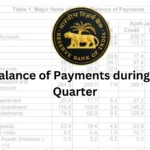Mumbai: The Indian stock market witnessed fluctuations this week as negative bets surged, prompting a slight decline in the Nifty 50 index. Investors, particularly foreign portfolio investors (FPIs), have been skittish amidst tariff tensions between the US and India, which have exacerbated market volatility. Analysts predict continued uncertainty unless key resistance levels are breached, while domestic institutional buying provides some cushion against foreign sell-offs.
Market Volatility and Bearish Trends
The Indian stock market, notably the Nifty 50 index, has experienced heightened volatility this week. On Monday, optimistic traders capitalized on short-covering moves, resulting in a brief rally. The Nifty surged by 0.8%, climbing from the previous Friday’s close of 24,427 to hit 24,625 points. However, the sentiment shifted on Tuesday as fresh bearish positions emerged, leading to a downturn of 0.7% from an intraday high of 24,756 to close at 24,580 points, a drop of 0.2%.
The aggregate value of puts exceeded calls by ₹1,181 crore, signaling bearish sentiment among investors. “Markets tend to make a short-term top when the outstanding value of puts sold exceeds that of calls sold,” stated Rohit Srivastava, founder of IndiaCharts, reinforcing the view that market sentiment can shift rapidly based on trader actions and patterns.
Impact of US-India Tariff Tensions
Tariff tensions between the US and India have added a layer of complexity to market dynamics. The imposition of a staggering 50% tariff on Indian goods, a substantial portion of which stems from penalties related to Russian energy imports, has fueled uncertainty. Following Prime Minister Narendra Modi’s participation at the Shanghai Cooperation Organisation summit, the stresses on the market became evident. The Nifty plummeted from 24,574 on 6 August to a low of 24,363 by 8 August, although a temporary rebound occurred post-GST rationalization announcements.
This historical backdrop illustrates the significant influence international relations have on the Indian economy. The market often reacts sharply to changes in tariffs or trade negotiations, as evidenced by previous instances, such as a drop following adverse tariff announcements in early March.
Fleeing Foreign Investors: A Curious Trend
The behavior of foreign portfolio investors (FPIs) has been notably cautious. Since September of last year, FPIs have net sold shares worth ₹1.8 trillion, significantly impacting market liquidity. Despite this, domestic institutional investors have stepped in to absorb the selling pressure, purchasing ₹5.2 trillion worth of shares. S.K. Joshi, a consultant at Khambatta Securities, noted that this domestic support has not resulted in a robust market rally due to persistent FPI selling.
The average net assets under management of equity-oriented mutual fund schemes stood at ₹33.47 trillion as of July 31, while FPIs held equity assets valued at ₹71.96 trillion by the same date. This shows a disparity in sentiment, with domestic investments seeking opportunities amid foreign withdrawals.
Future Outlook: Key Levels to Watch
Looking ahead, analysts predict that the Nifty 50 must breach critical resistance levels to avoid further decline. “Now, unless the Nifty convincingly breaks Tuesday’s high of 24,756, we will go lower,” warned Srivastava. This caution is echoed by Sahaj Agrawal, who noted a looming support level at 24,200, suggesting that sustained trading above this mark could pave the way for more substantial movements. A breach, however, could reintroduce corrections to the market.
The consensus among financial experts indicates the Nifty may experience sideways movement in the range of 24,000-25,000 in the near term, a situation marked by uncertainty in global economic policies. Investors are wary given the unpredictable nature of market sentiment driven by external factors.
Key Market Metrics
| Metric | Value |
|---|---|
| Nifty 50 Close (Tuesday) | 24,580 |
| Puts Value Exceeding Calls | ₹1,181 crore |
| Foreign Portfolio Investors Net Sell | ₹1.8 trillion |
| Domestic Institutional Investor Net Buy | ₹5.2 trillion |
| Average Equity Mutual Fund Assets | ₹33.47 trillion |
In summary, the Indian economy faces considerable challenges as tariff tensions and fluctuation in investor sentiment dominate the financial landscape. While the immediate future may appear rocky, analysts like Srivastava and Agrawal offer some hope, advocating for strategic investing and monitoring key resistance levels for clearer signals. The interplay of domestic support and foreign investor behavior will undoubtedly shape market performance in the forthcoming weeks.
Bankerpedia’s Insight 💡
The recent fluctuations in the Nifty index, driven by a surge in bearish options, underscore a troubling trend in India’s financial landscape. As foreign portfolio investors scale back amid escalating U.S.-India tariff tensions, domestic investors are left to absorb the impact. This highlights the fragility of market sentiment and the potential for increased volatility. For savvy investors, it’s essential to stay informed and consider diversification strategies to mitigate risks. Watching key support levels, such as 24,200, will be crucial as market dynamics evolve.
What Does This Mean for Me? 🤔
- Salaried Person → Job security may decline due to market volatility.
- Business Owner → Market volatility may impact business planning and investments.
- Student → Market volatility may affect student investment decisions.
- Self-employed → Market fluctuations may affect self-employed income stability.
- Homemaker → Market fluctuations may affect household budget decisions.
- Retiree / Senior Citizen → Market volatility could affect retirement savings and investments.
- Job Seeker → Market volatility may reduce job opportunities for seekers.
- Farmer / Rural Citizen → Market fluctuations may increase farming costs and uncertainty.
Research References 📚
- www.livemint.com
- RBI
- SEBI
- Ministry of Finance
- NABARD
- Department of Financial Services (DFS)
- IMF
- World Bank
Loved our Research? ❤️
Bankerpedia turns financial confusion into clarity!
Subscribe to our YouTube channel for unbiased insights, financial literacy & practical banking wisdom.










